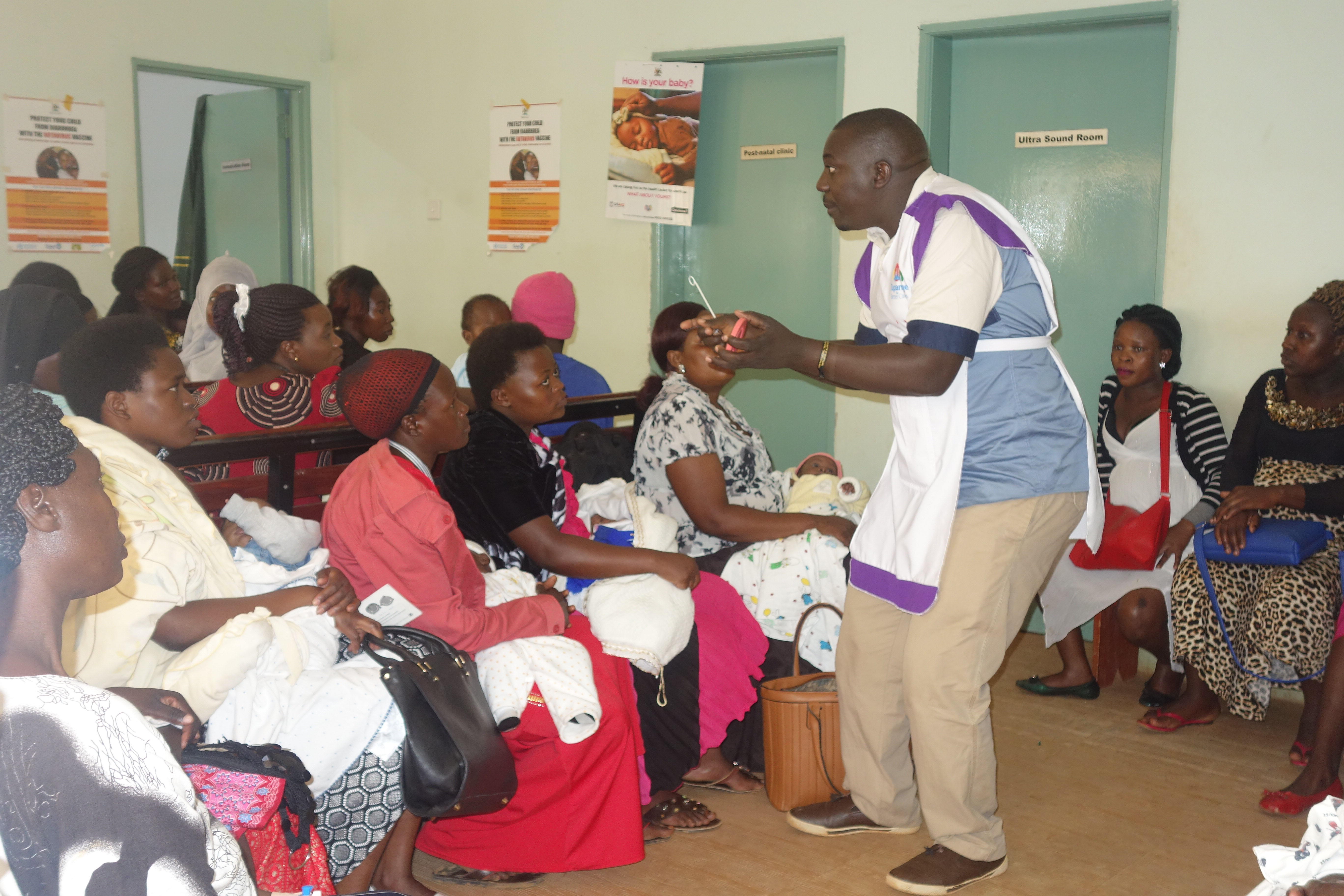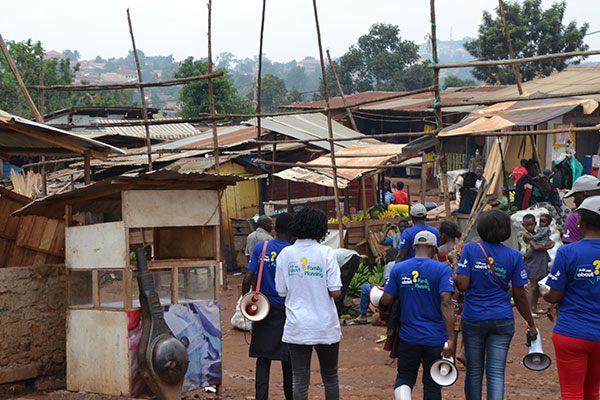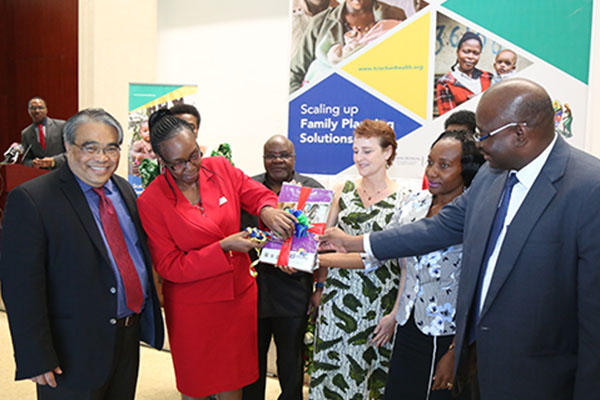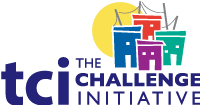East Africa: Self-Reliance
- Home
- Help and Support
- Close
- Toolkits
- Global Toolkit
- AYSRH Toolkit
- Hub Toolkits
- Core High-Impact Practices
- Gender Essentials Mini Course
- Close
- Resource Collection
- Community of Practice
- Coaching
- Log In/Register
- My Profile
- English
 Use of the Reflection and Action to Improve Self-reliance and Effectiveness Tool (RAISE)
Use of the Reflection and Action to Improve Self-reliance and Effectiveness Tool (RAISE)
Implementation of quality and sustainable proven family planning (FP) and adolescent and youth sexual and reproductive health (AYSRH) health interventions needs to be assessed on a regular basis. The Reflection and Action to Improve Self-reliance and Effectiveness (RAISE) tool guides implementers at the local level to measure the intensity of implementation, identify corrective actions to take and maintain quality during rapid scale-up, encouraging local ownership that leads to sustainability and a holistic approach to data for decision-making.
Apart from improving overall performance, routine quality assessments, like RAISE, provide an opportunity for course correction and evidence-informed planning for subsequent time periods. The tool utilizes a standard set of indicators that help local governments reflect upon their implementation progress within the following domains or pillars of sustainability that ultimately ensure local government’s self-reliance.

Why is Accessing the Quality and Sustainability of FP and AYSRH Program Interventions Important?
- To support identification of gaps or areas that require strengthening in implementation of FP/AYSRH interventions
- To ensure a standardized process for developing a concrete action plan for resource mobilization and support required to address the gaps and needs
- To aid in monitoring the progress of the action plan and effectiveness of the interventions
Evidence
- Improved performance across East Africa geographies:
- Average scores across East Africa geographies increased by 42.9% from 56% to 80% within a 15-month period.
- Areas that significantly improved include local ownership and accountability, coaching, feedback and sharing, public-private partnership, adoption/ adaptation, contraceptive procurement, and scale up and diffusion
“We have now done RAISE assessments four times and realized that the pharmacy approach was getting recognition by implementers. We need to continue to collaborate with the Kenya Pharmacy Association (KPA). More than 80% of our facilities are private and the young people access their contraception methods there. If we get the data into the KHIS, it will improve the county’s FP indicators.”.
Dr. Salma Swaleh, Director of Public Health Services of Mombasa County, Kenya
- 97 cities from across East Africa, Francophone West Africa, India and Nigeria have completed one round of RAISE.
- 28 cities in pre-graduation across the four hubs have successfully completed two to three rounds of RAISE assessments. Of which, 17 (6 geographies in East Africa, 3 geographies in Francophone West Africa, 5 cities in India and 3 states in Nigeria) have shown significant improvements and are primed to achieve graduation or the self-reliance status by June 2021. (have shown significant improvements and have been primed to graduate in next 3 months.
Guidance on How to Implement RAISE

The process for conducting a TCI RAISE assessment.
Pre-Workshop
- Schedule and inform health implementers the day of the RAISE assessment
- Identify the team within the relevant departments to participate in the assessment. Ideally the recommended persons should at least include political leaders representing the health sector, technical heads, finance, representation from technical working groups, community focal person and health information system focal person. Members of the Program Implementation Team (PIT) should lead the identification of the team and serve as the main facilitators of the assessment.
- Share the RAISE assessment form to be completed prior to the workshop.
Workshop
- Participants discuss completed individual assessments in small groups and complete the tool as a group. Note: The RAISE tool is adaptable, and implementers can adjust accordingly to local context and existing government structures.
- Assess the sustainability pillars/domains based on the following criteria and provide a score for the domains and weight the average to get the final score. Note: It is important that supporting evidence is also provided with each score. This may include budgets, monitoring plans, meeting minutes and local government policy documents and reports. Where supporting evidence is not available, the local government entity should provide a justification for the score.
Criteria for each sustainability pillar/domain
- Using the Consensus Form from the RAISE tool, the PIT facilitates the group in reaching consensus on the grading of the current stage of implementation. The PIT member computes the average score for each domain by adding the individual ratings and dividing by the number of components. For example, the first domain has seven components, so after rating each component from 1 to 4, add those ratings together and divide by 7.
- At the end of the assessment, use the Level of Implementation computation form (Table below) to get the final score. This is determined by weighting each domain and then computing an overall percentage. The criteria for each score are outlined in the tool itself.

The weighted average is the overall score and the local government is ranked according the levels in Figure below.

Four levels of performance are possible during the assessment.
- All participants provide input in developing an action plan for improvement and course corrections based on the domains and areas that scored the worst or are viewed is priority for the upcoming quarter.
- The PIT then will need to share the action plan to ensure that all activities for improvement are well understood.
Post-Workshop
- All involved local government implementers support implementation of the action plan developed during the assessment. The PIT should share reminders of actionable areas, including the specified deliverables during program implementation meetings to responsible persons according to specified deliverables and timelines.
What is the Frequency of RAISE?
- Non-graduated local governments will conduct RAISE assessments quarterly, while graduated ones semi-annually (every six months).
Key Outcomes
- Best-practice sharing enabling local government implementers to own their FP/AYSRH programs.
- Increased capacity among health information officers to promote quality implementation of FP/AYSRH programs within their cities.
- Focused coaching and training for local government implementers based on those that need support.
- Management of FP/AYSRH programs sustainably and impactful with development of clear action plans at local government level.
Monitoring Processes
- Number of RAISE assessments conducted and completed
- Percentage of actionable items implemented to sustain quality family planning and AYSRH program interventions
- Number of cities recognized for quality and sustainable implementation of family planning and AYSRH programs
Cost
- Meeting/workshop costs to conduct the assessment
Sustainability Considerations
- Inclusion of action plans within government workplans
- Inclusion of RAISE as a routine activity in the local government plans and budgets
- Adoption/Adaptation of the RAISE Tool into other local government technical areas beyond FP/AYSRH
RAISE in Action: Feedback from Local Government Staff
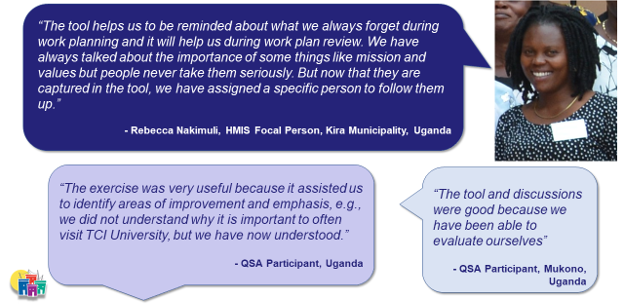
TCI APP USERS PLEASE NOTE
You will only receive CERTIFICATES by email – when earning a score above 80% – and will not be able to view or print a certificate PDF from the TCI app.
Test Your Knowledge
Earn a Certificate
Quiz Summary
0 of 5 Questions completed
Questions:
Information
You have already completed the quiz before. Hence you can not start it again.
Quiz is loading…
You must sign in or sign up to start the quiz.
You must first complete the following:
Results
Results
0 of 5 Questions answered correctly
Your time:
Time has elapsed
You have reached 0 of 0 point(s), (0)
Earned Point(s): 0 of 0, (0)
0 Essay(s) Pending (Possible Point(s): 0)
Categories
- Not categorized 0%
- 1
- 2
- 3
- 4
- 5
- Current
- Review
- Answered
- Correct
- Incorrect
-
Question 1 of 5
1. Question
The benefits of using the RAISE tool include:
CorrectIncorrect -
Question 2 of 5
2. Question
The RAISE tool only needs to be done once at the beginning of implementation.
CorrectIncorrect -
Question 3 of 5
3. Question
Sustainability of the RAISE Approach would look like:
CorrectIncorrect -
Question 4 of 5
4. Question
How useful did you find the information and/or tools presented on this page? Please write your response in the box below using one of the following phrases: Very useful, Useful, Somewhat useful, Not useful.
Feel free to comment on why you made that choice.
-
This response will be awarded full points automatically, but it can be reviewed and adjusted after submission.
Grading can be reviewed and adjusted.Grading can be reviewed and adjusted. -
-
Question 5 of 5
5. Question
How do you intend to use the information reviewed and/or tools that you accessed?
-
This response will be awarded full points automatically, but it can be reviewed and adjusted after submission.
Grading can be reviewed and adjusted.Grading can be reviewed and adjusted. -




